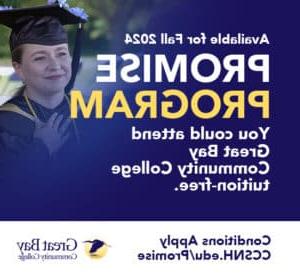Overview
The Computer Technologies Department offers a Programming Certificate for students who want to develop the technical expertise for a career in backend, middle-tier programming or web application development.
The core portion of the Certificate provides students with a solid foundation in programming logic and database design. Students can focus on Java, C++, or C# as their development platform and then expand on their expertise by selecting electives in a particular area.
Successful completion of this program will allow students to seek employment in entry-level programming, quality assurance, technical support, or technical sales and integration.
Curriculum Outline
The classes and coursework required is as follows.
Note: The Programming Certificate is a rigorous program. Students are expected to spend additional time beyond the minimum to complete requirements and achieve success. Students are also required to have college level reading, writing and math skills prior to enrollment. CIS112G Introduction to Object Oriented Programming or permission of the program advisor is required before taking any CIS1X8G course.
Technical Standards
Students enrolling in the Programming Certificate program must have college level writing, mathematics and technology skills. Completion of, or placement into the following (or equivalents) will satisfy these prerequisites:
- ENGL110G or 111G for English proficiency
- MATH145G or 150G or higher for Math
- CIS107G/110G or 111G/112G/177G for fundamental technology and programming skills
Certificate Requirements
| Course ID | Course | Theory | Lab | Credits |
|---|---|---|---|---|
| CIS113G | Database Design and Management | 2 | 2 | 3 |
| CIS124G | Web Development I | 2 | 2 | 3 |
| CIS224G | Web Development II | 2 | 2 | 3 |
| CIS1X8G | Introductory Programming Course Elective | 2 | 2 | 3 |
| CIS2X8G | Advanced Programming Course Elective | 2 | 2 | 3 |
| Total Credits | 15 | |||
Elective Courses
Minimum of 9 Credits (3 Courses) Required
Students must take at least one introductory and advanced class in the language of their choice. Once they complete the advanced course, they may select another programming language for study.
All of the programming classes listed as part of the core can also count toward an elective.
| Course ID | Course | Theory | Lab | Credits |
|---|---|---|---|---|
| CIS118G | Introduction to .NET | 2 | 2 | 3 |
| CIS134G | Web Style and Design | 2 | 2 | 3 |
| CIS146G | Linux I | 2 | 2 | 3 |
| CIS148G | Introduction to Java Programming | 2 | 2 | 3 |
| CIS158G | Introduction to C++ | 2 | 2 | 3 |
| CIS177G | Introduction to Python | 2 | 2 | 3 |
| CIS216G | Web Server Administration | 2 | 2 | 3 |
| CIS218G | Advanced .NET | 2 | 2 | 3 |
| CIS223G | Advanced SQL | 2 | 2 | 3 |
| CIS246G | Linux II | 2 | 2 | 3 |
| CIS248G | Advanced Java Programming | 2 | 2 | 3 |
| CIS249G | Linux Databases | 2 | 2 | 3 |
| CIS253G | Data Sharing | 2 | 2 | 3 |
| CIS254G | PHP and MySQL | 2 | 2 | 3 |
| CIS258G | Advanced C++ | 2 | 2 | 3 |
| CIS291G | Advanced Topics | 2 | 2 | 3 |
| Total Credits | 9 | |||
Total Overall Credits: 24
Program Outcomes
Students will be able to:
• Analyze a problem, and identify and define the computing requirements appropriate to its solution.
• Design, implement and evaluate a computer-based process or program to meet desired needs.
• Use current techniques, skills, and tools necessary for computing practices.
• Demonstrate a familiarity with state-of-the-art programming techniques, tools, and practices.
• Demonstrate a solid foundation in the fundamental areas of computer science – which are algorithms, systems, and software – and exposure to multiple sub-disciplines of computer science.
• Understand professional, ethical, legal, security, and social issues and responsibilities related to IT, to include an understanding of cross-cultural issues and global perspectives.
• Use written and oral communication skills necessary to be effective in the IT industry.
• Recognize the need to maintain currency with future changes in the computing profession.
• Use creative and critical thinking processes to work independently and/or collaboratively to develop complex solutions, and take the lead to implement those solutions.
• Function effectively on teams to accomplish a common goal.
• Through the use of an online portfolio, students will assess and reflect upon their own learning and create a cumulative portfolio of their “best” work.
Salary Q&A
To learn more about potential earnings visit: Bureau of Labor Statistics Occupational Outlook Handbook www.bls.gov/oco
For more information about the outlook and trends for the Computer Technologies industry, please visit: www.bls.gov
Questions?
Contact an Admissions Representative at (603) 427-7600 ex 7500 or [email protected]





